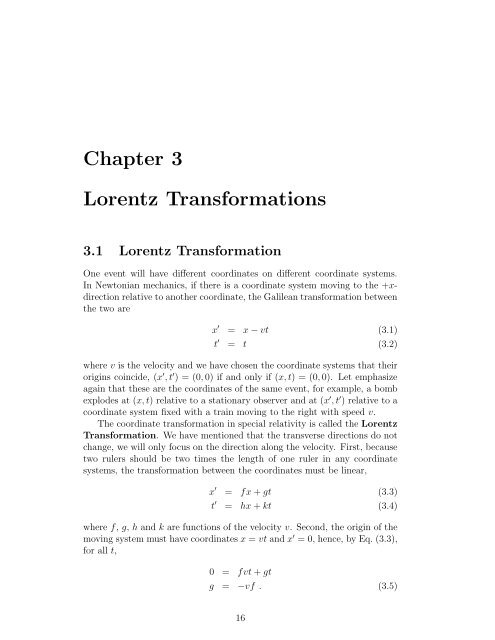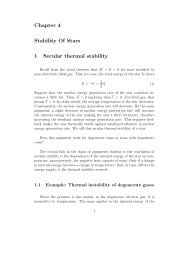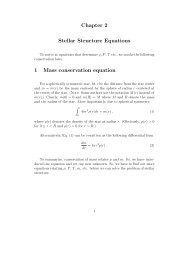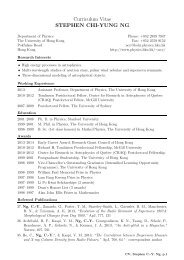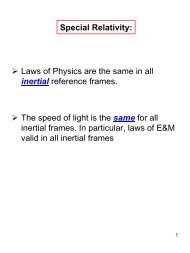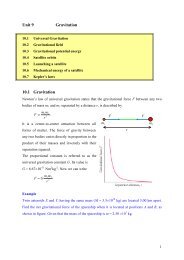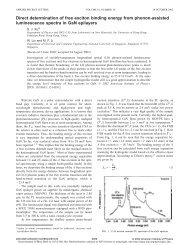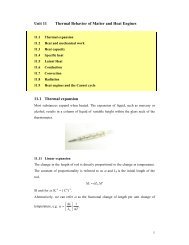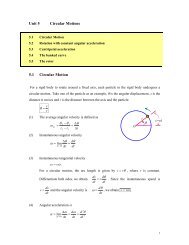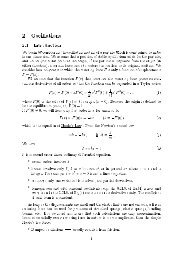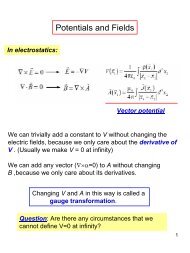here - Department of Physics, HKU
here - Department of Physics, HKU
here - Department of Physics, HKU
You also want an ePaper? Increase the reach of your titles
YUMPU automatically turns print PDFs into web optimized ePapers that Google loves.
Chapter 3<br />
Lorentz Transformations<br />
3.1 Lorentz Transformation<br />
One event will have different coordinates on different coordinate systems.<br />
In Newtonian mechanics, if t<strong>here</strong> is a coordinate system moving to the +xdirection<br />
relative to another coordinate, the Galilean transformation between<br />
the two are<br />
x ′ = x − vt (3.1)<br />
t ′ = t (3.2)<br />
w<strong>here</strong> v is the velocity and we have chosen the coordinate systems that their<br />
origins coincide, (x ′ , t ′ ) = (0, 0) if and only if (x, t) = (0, 0). Let emphasize<br />
again that these are the coordinates <strong>of</strong> the same event, for example, a bomb<br />
explodes at (x, t) relative to a stationary observer and at (x ′ , t ′ ) relative to a<br />
coordinate system fixed with a train moving to the right with speed v.<br />
The coordinate transformation in special relativity is called the Lorentz<br />
Transformation. We have mentioned that the transverse directions do not<br />
change, we will only focus on the direction along the velocity. First, because<br />
two rulers should be two times the length <strong>of</strong> one ruler in any coordinate<br />
systems, the transformation between the coordinates must be linear,<br />
x ′ = fx + gt (3.3)<br />
t ′ = hx + kt (3.4)<br />
w<strong>here</strong> f, g, h and k are functions <strong>of</strong> the velocity v. Second, the origin <strong>of</strong> the<br />
moving system must have coordinates x = vt and x ′ = 0, hence, by Eq. (3.3),<br />
for all t,<br />
0 = fvt + gt<br />
g = −vf . (3.5)<br />
16


